Top 10 Best Cleantech Companies In India In 2023.

Cleantech company is the new way of the future. All industries require clean, sustainable practices. As the world changes, we must pay more and more attention than ever before in order to embrace change and build a better future.
India is gradually adapting to this shift as it enters the market, and the number of green-tech companies has recently increased.
Several Indian startups are developing clean technology solutions to aid in the development of a sustainable energy future. As a result, it has sparked interest among investors and entrepreneurs looking for opportunities in this industry throughout the ecosystem.
With numerous enterprises and foreign direct investment inflows, India has become a highly profitable market for the Cleantech industry.
What is cleantech, exactly?
The following aspects of clean technology are included:
- Clean energy and energy storage
- Materials that are environmentally friendly
- The efficiency of energy and resources
- The long-term viability of agriculture
- Transportation that is environmentally friendly
- Land, water, and air quality
- Waste and recycling
There is still a high level of entry in India, where the market for clean technologies is expanding and the country will increasingly rely on clean methods for generating, transmitting, and managing power. As a result of innovative startups, clean technology is growing.
In India, young entrepreneurs install 75% of solar PV capacity. The government anticipates attracting over $200 billion in RE investments to achieve 15% of the total energy basket.
Cleantech Appreciation
Cleantech firms are common in the energy, water, transportation, agriculture, and manufacturing industries. Green technology and green technology are frequently used interchangeably.
It originates with the venture capitalist community (VCs). It differs from how many green businesses explain the concept, which are more concerned with sustainability than profitability. Solar energy, wind energy, biofuels, and water purification are all growing industries.



Cleantech Influencing Factors
- The world’s population is expected to reach 9.9 billion by 2050, with developing countries accounting for the vast majority of people.
- Natural resources will be depleted further, supply problems will worsen, and price volatility will result.
- Natural resource demand is expected to skyrocket in developing countries as a result of rapid industrialization.
- The globalization of cities has a direct impact on resource consumption.
- Many countries consider energy independence to be a strategic imperative.
- New environmental materials have been really developed in response to consumer demand for cleaner, less toxic products.
- As a result of the rapid industrialization, policies and regulations are changing.
- When the costs and prices rise, businesses and consumers look for ways to cut costs and increase efficiency, particularly when revenue is declining.
- The number of relatively wealthy (i.e., middle-class) people is expected to grow over time.
- Risk management is also critical in the construction of the current cleantech infrastructure.
- Climate change will be exacerbate many of these factors.
1. Husk Power Systems
The company was founded by Manoj Sinha, Ratnesh Yadav, Charles W. Ransler, and Gyanesh Pandey.
Founded in 2007.
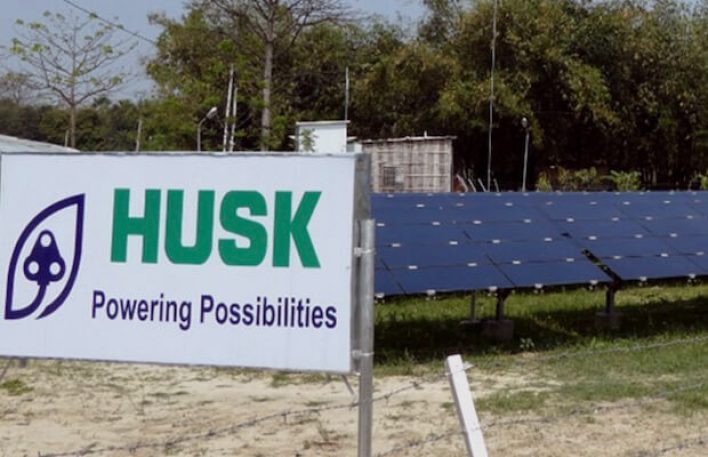


A biomass gasifier converts rice husks into fuel, which generates electricity using a low-cost technology developed by Husk Power Systems in Bihar, India. The company generates electricity using proprietary technology via a biomass gasifier that converts rice husks, a byproduct of rice production, into fuel. Their ‘pay-per-use’ renewable energy service uses an innovative mobile-enabled metering system and provides a flexible service powered entirely by renewable energy. When problems arise, they have a 24-hour on-site team and a maximum response time of four hours. Their low-cost alternating current power meets the needs of households, small businesses, and factories.
2. ONergy
The founders are Vinay Jaju, Ekta Kothari, and Piyush Jaju.
It was founded in the year 2009.
ONergy offers multiple design, engineering, and manufacturing services for solar rooftop power plants, solar irrigation pumps, and other solar energy generation schemes. By providing these services, it hopes to reduce customers’ energy costs. OPEC and bank financing also make solar energy more affordable. The company provides both low-cost and high-quality products. It creates an ecosystem for sustainable development and rural empowerment by maintaining a robust after-sales service network.



Recently released ONergy products include solar TV, solar computers, solar microgrids, and solar irrigation systems. Mathis operates through existing networks of local non-governmental organizations, women’s groups, and rural entrepreneurs. Thanks to RECs in these three states, it can operate in remote areas throughout West Bengal, Odisha, and Jharkhand. RECs are available in 12 states across the country.
3. Karma Recycling
The founders are Aamir Jariwala and Akshat Ghiya.
Founded in 2013.
Karma Recycling, headquartered in Delhi, is one of the largest trade-in operators and mobile device distributors in India. As a result, it is a consumer, enterprise, and services solution for managing large-scale buyback and trade-in programs. It has the world’s second-largest mobile device market and is quickly becoming a global e-commerce and recycling hub.



Reusing mobile devices helps divert tons of e-waste from landfills. The life of a mobile device should be extended whenever possible, and when this is not possible, it should be responsibly recycled. Karma Recycling has restored over more than 95% of the mobile devices we’ve collected. 5% of the remaining materials are responsibly recycled as part of the zero-landfill policy.
4. A K Surya Power Magic
The company was founded by Abhilash Thirupathy and Karthic Ravindranath.
Year of inception: 2012.



Surya Power Magic, based in Coimbatore, provides the Indian farming community with dependable and long-lasting solar irrigation solutions. Power has always been a problem for Indian farmers and the general public. Farmers in power-deprived areas can purchase solar water pumps from the company. Surya Power Magic works with 36 Indian startups and five American startups to develop socially responsible products.
5. Green India Building Systems and Services (GIBSS)
The founders are Arun Shenoy and Mandar Kaprekar.
It was founded in 2009.
This Cleantech startup with offices in Mumbai, Delhi, Bangalore, Hyderabad, and Singapore specializes in cooling geothermal air conditioning technologies. It also offers innovations like Hot Water Cogeneration and ultra-efficient LED lighting systems. According to the company, user costs will be reduced by 50%-60%, as will building carbon footprints. The technology developed by the company is currently used in 400 facilities in India.



The behavior of an organization is inextricably linked to the behavior of individual GIBSS employees while at work. Every employee at GIBSS is expected to adhere to the highest ethical and business standards. The GIBBS Group recently received the Sankalp 2012 Award as the most innovative and sustainable company in the ‘Clean Tech & Clean Energy Sector.’
6. Greenway Grameen Infrastructure Private Limited Ltd.
The founders are Neha Juneja and Ankit Mathur.
Year of inception: 2011
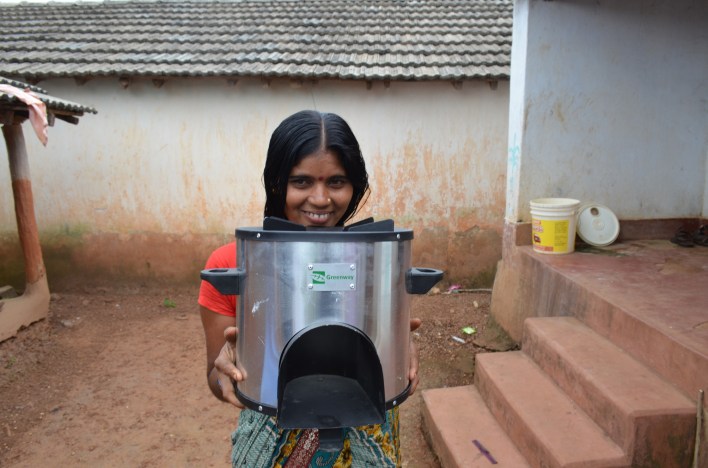
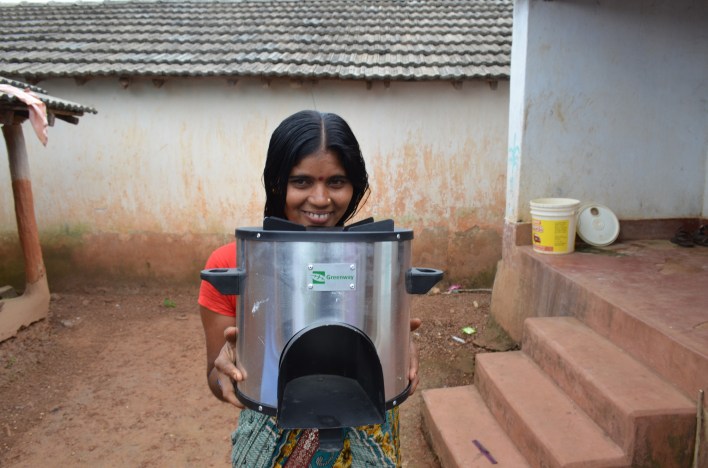

Greenway Infra Pvt. Ltd. Ltd. Ltd. provides rural Indians with home energy appliances by designing, manufacturing, and distributing affordable and energy-efficient smoke-reducers. The platform through which the company sells its products is Paytm. Emissions from smoke, fuel, and greenhouse gases are reduced by 70% and 65%, respectively. It aspires to become the preferred brand of choice all over the world.
7. GreenObin
The founders are Saurabh Jain, Utsav Sharma, and Nitin Goel.
Year founded: 2009.
GreeObin provides the following services: waste auditing, training programs, recycling bins, eco fairs, and recycled paper products, among others.



GreenObin is a green technology startup that offers self-service recycling and waste management. Its mission is to become the premier scrap collection service while also being environmentally conscious, profitable, and well-managed. Its overarching goal is to raise community awareness, recycle waste, and save the environment. The program also aims to raise environmental awareness among its employees, who rely heavily on paper.
8. Gram Power
The founders are Yashraj Khaitan and Jacob Dickinson.
Year of inception: 2010.



Gram Power has set the bar for innovative technology, from rural microgrids to one of the largest innovative meter installations in the country. The Smart Grid technologies developed by the startup address a significant challenge in developing countries: electrification. The startup has installed smart grids in 30 rural Indian areas using its Smart Microgrid solution. Power distribution for the national grid is managed using the technology of India’s largest private power distribution company.
9. OORJAN
The company was founded by Gautam Das, Roli Gupta, and Hrishikesh Deshpande.
Year of inception: 2014.
The rooftop solar market in India is thriving. The country added more solar capacity last year than at any other time in its history. The Indian government has pledged to deploy 100 GW of solar power (USD 100 billion) by 2022, with rooftops accounting for 40% of that total.
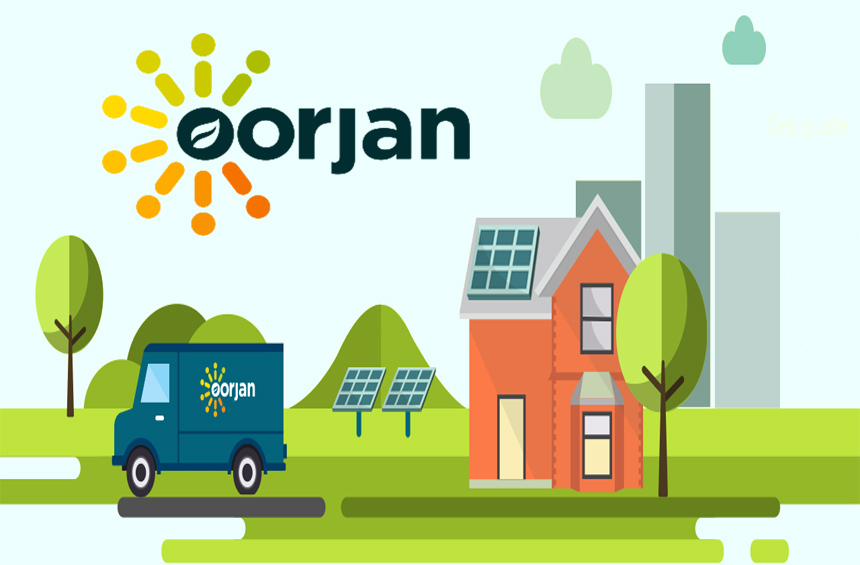
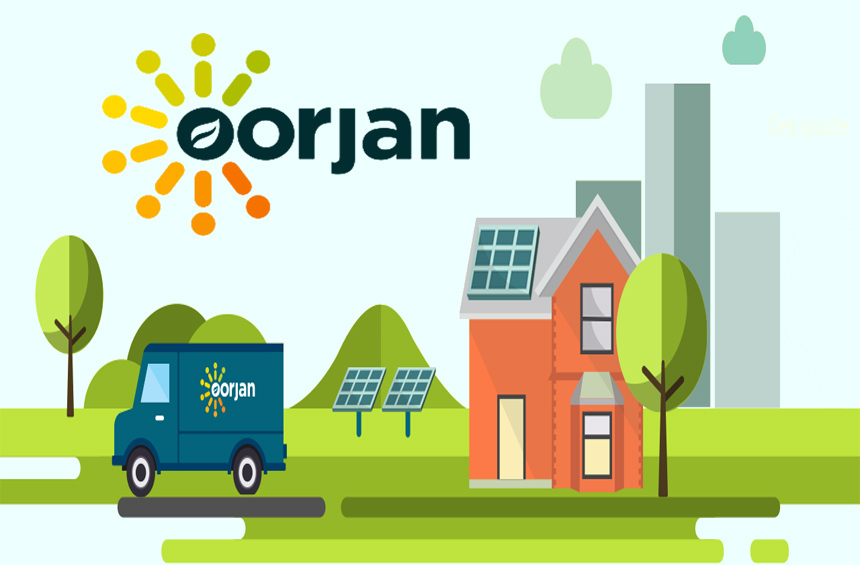

One of the most innovative and rapidly growing online portals is Oorjan, an Indian rooftop solar platform. Obtaining volume discounts from top solar brands in India and around the world is one of Oorjan’s strengths. Through direct agreements with the nationalized banks, the bank makes low-interest loans to homes, housing societies, businesses, and non-profit organizations.
10. Log 9
The founders are Akshay Singhal and Kartik-Hajela.
Year of the inception: In the year of 2015.



The company creates the new sustainable energy and filtration solutions using nanotechnology. The company’s headquarters are in Bangalore, India. The government of India’s Department of the Science and Technology named this graphene-focused company the “Most Innovative Technology Company of 2018.” Its accomplishments include the development of aluminum fuels for stationary and automotive applications. Log 9’s commercialization of graphene will be overseen by a team of scientists and engineers. Log 9 Spill Containment’s ‘Sorbene’ UV Air Purifier line recently added indoor air purifiers.
The cleantech industry in India is influenced by laws.
The sustainable energy sector in India is not governed by specific laws or guidelines. There are, however, some important facts, procedures, and arrangements to be aware of:
- 2003 Electricity Act
- The National Tariff Policy for 2016 (NTP)
- National Climate Change Action Plan (NAPCC)
- The United States’ Rural Electrification Policy
- National Electricity Policy 2005
According to recent news reports, the Indian government is working on regulations that will allow businesses to purchase renewable electricity at green rates from state distributors. As a result, India’s carbon footprint will be reduced, and businesses will be encouraged to transition completely to renewable energy.
The next step
Aside from reflecting increased environmental awareness, the need for a cleantech transition makes sense from the perspective of a low-carbon, resilient, and regenerative economy. In addition to addressing the current challenges of unemployment and unsustainable growth, a recovery powered by green stimulus measures can address the vulnerabilities caused by climate change.
In the coming decades, India’s cleantech sector has set lofty goals for achieving a net-zero carbon economy. To meet those targets, India must overcome some obstacles, such as difficulties in acquiring land, the inability to pay utility bills, lowering tariff caps, and improving access to finance.
Cleantech companies in India require supportive policy frameworks and regulations.
The Vitality of India’s Cleantech Industry
India’s Cleantech industry has expanded rapidly in recent years. In its support for this industry, the government has always been generous and forthright.
According to Miss Gaganjot Kaur, Project Manager at Swissnex India’s cleantech initiative, our country plans to increase renewable energy capacity by 175 GW by 2022.
Nonetheless, the Indian government has revised its target to 225 GW by 2022, with several plans under consideration.
The Indian government plans to meet 40% of its energy needs with renewable energy. This project is gaining favor with foreign investors.
Even as recently as 2018, India was ranked fourth in EY’s Renewable Energy Community Attractive Index. Indian energy companies can offer both domestically produced and imported goods and services.
India has big plans for the renewable energy industry. By 2022, the goal was to increase renewable energy capacity to 175 GW. It had set a one-year deadline to accomplish this goal. Despite this, India’s government has raised its target to 225 GW by 2022, far exceeding the original 175 GW target.
India added 11,788 MW of renewable energy capacity in 2017-18, which grew to 1,832,26 MW (interactive and off-grid grid) in April-July 2018.
In total, up to 8.5 GW of renewable energy capacity is expected to be installed in 2018-19, allowing India to meet or exceed its Paris Agreement targets.
By 2030, India plans to produce 40% of its total energy consumption from renewable sources.
Clean technology is the technology of the future. Across industries, clean and sustainable practices are in high demand. Accepting change for a better tomorrow requires more concentration than ever before.
With a recent surge in the number of green-tech start-ups, India is gradually and steadily adapting to this shift as it enters the market.
Several Indian clean technology startups are creating amazing solutions to help build a sustainable energy future. As a result, there is a buzz in the ecosystem among investors and entrepreneurs interested in investing in this field.
Indeed, with a plethora of enterprises and FDI inflows sucked into the field, India now provides a very profitable commercial sector for the Cleantech industry.
This article discusses the current challenges confronting India’s Cleantech sector, as well as opportunities for future growth and potential direction.
Challenges in the Cleantech Industry
- Increasing the reliance on renewable energy sources
- Renewable energy sources like solar and wind are unreliable, which makes investment difficult. Because they lack the ability to store excess electricity, these sources cannot generate large amounts of electricity.
- Furthermore, these sources are not scalable and are incapable of meeting current global energy demand.
- Installation and development costs
One of the most significant barriers to renewable energy development has been identified as the high initial costs of solar and wind energy. Integration and planning of solar and wind energy are equally important. Furthermore, further research and technological development of these projects is prohibitively expensive. Given the impending consequences of global warming and increased fossil fuel combustion, clean (and green) technology has risen to the top of the public agenda as several nations declare a climate emergency and move toward viable options for climate and biodiversity preservation.
This field, also known as “Cleantech,” is gaining traction among researchers, academics, technologists, industry experts, and other stakeholders.
As a result of the rapid depletion of natural resources, increasing population, and urbanization, the world is rapidly shifting toward renewable energy. As a result of this situation, environmentally friendly products and solutions are in high demand.
Trends in Cleantech
National Solar Mission
The Jawaharlal Nehru National Solar Mission (JNNSM) was established in 2010 to improve India’s energy security while encouraging environmentally sustainable growth. Prime Minister Narendra Modi intends to increase India’s solar power capacity targets to 100 GW by 2022, according to the JNNSM.
Clean technology, also known as “Greentech,” is any technology that is used to reduce negative effects and improve environmental sustainability, as we all know.
Cleantech is an umbrella term for investment, technology, and business sectors such as clean energy, the environment, and sustainable or green products and services.
In 2017, the Indian clean-tech market was estimated to be worth more than $25 billion, and India plans to meet 40% of its total energy needs with renewable resources by 2030, up from 22% currently.
So, how exactly does cleantech work? Previously, the term “cleantech” referred to a diverse set of technologies and practices, including solar and wind energy.
Cleantech is still popular in the financial, venture capital, and business communities due to process improvements that can increase efficiencies in supply chains and manufacturing lines.
The term “cleantech” was coined in the late 1990s and early 2000s by the venture capital (VC) investment community.
Various incentives have been put in place to achieve this goal, including zero import duties on capital investments and raw materials, as well as low interest rates and priority lending sectors.
Enhancement of abilities
By 2022, the solar and wind energy sectors in India are expected to employ over 0.3 million people. To meet the increasing demand for skilled labor, the solar energy sector has set a target of 50,000 Suryamitras for 2019-2020.
Green energy corridor
The German Development Bank has provided India with a soft loan in the amount of 75.26 billion rupees (USD 1.05 billion) to assist with the implementation of green corridor projects. As part of this initiative, renewable energies will be integrated into traditional power grids. 40% of intrastate transmission projects and 70% of interstate transmission projects will be funded by the soft loan.
The distribution of solar energy
The Indian government has made it a top priority to provide electricity to all citizens. Slums, villages, and households that are not currently connected to the grid or centralized distribution system fall into this category. A few cleantech firms use standard programs to convince slum dwellers to switch from kerosene to solar power. Pollinate energy, for example, offers low-income families in Bengaluru’s slums five-week, interest-free payment plans for renewable energy lanterns and stoves.
The Real World of Cleantech
Investors looking for environmentally friendly companies and technologies now have a plethora of options, ranging from single companies to diversified portfolios.
The majority of publicly traded cleantech companies are involved in renewable energy production, such as solar, wind, and hydroelectric power. Terraform Power (TERP) of New York and Alterra Power of Toronto are two such companies (AXY). Diversified investment vehicles, such as Brookfield Renewable Partners, a publicly traded limited partnership, are also available to investors (BEP).
Another major source of interest in cleantech is the sector’s steady increase in job opportunities. Solar panel installers, civil and process engineers, technicians, and manufacturing personnel are just a few of the many jobs available in cleantech companies, as are a variety of trade-related occupations required to install and maintain cleantech facilities.
Solar-panel installers, for example, were the fastest-growing job category in eight different states, with the number of such jobs expected to more than double by 2026, according to Yahoo Finance. Wind turbine technicians were also mentioned as a fast-growing field, with an average annual salary of nearly $55,000.
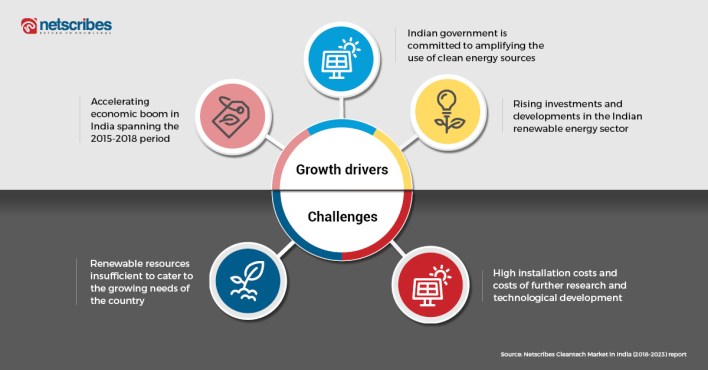
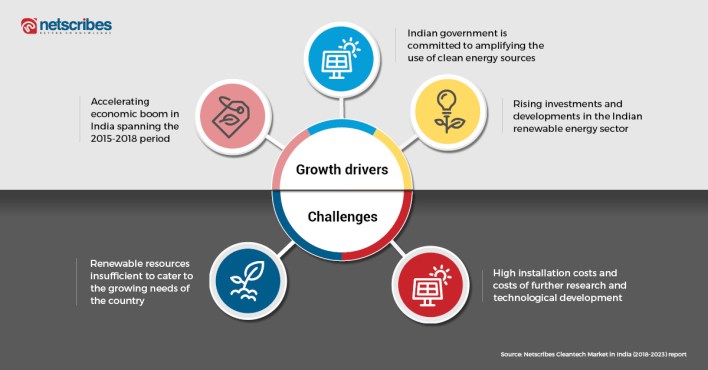

Important Investor Interest Topics
1. The first critical point is that investors will only be interested in you if your company is capital efficient and does not require continuous cash supplies to profit. This may also imply that the company should demonstrate a first product, the proceeds of which will be used to fund the various other initiatives. Only companies with higher profit margins and competitive pricing will pique the interest of investors.
If a technology company is still in its early stages, it can use alternatives such as government loans, reservation-based capital raising, and profitable products, proper project financing, and strategic partnerships.
2: Managing Your Projected Cash Flow:
Investors will be interested in the projected profit and cash flow as well. Investors may also cause dilution by exercising their options, resulting in a decrease in the company’s ownership percentage. If you want to increase cash flow, non-dilutive funding (funding that does not require the sale of the company’s shares) is available. You can, for example, begin taking pre-orders for your products ahead of time and develop a refund policy.
3: Evidence of Early Market Traction:
Traction indicates that the company has a previous set of customers or users, which basically shows investors that your product is progressing or “going places,” with a high chance of profit. Investors will be drawn to companies with a lot of traction because it means better financing terms. Examples of traction include:
Companies that have feasible or viable products
Companies with well-known clients
Businesses that offer strategic alliances
Customer testimonials or proof
Companies accepted into programs such as Cleantech Open, Cyclotron Road, and Y-Combinator, among others.
4: Large Market Opportunity:
Companies with significant market potential will pique the interest of investors. Such businesses should be able to define the market in which they will launch their products, show that the market has a high dollar value, show that the company is in a position to have a large impact on the market and capture a large portion of it, and show that your product has the potential to grow significantly in other markets as well. Clean tech companies should look for strategic partners in other industries as they navigate the market.
5: The company’s appeal is not limited to Clean Tech Investors:
Some investors lose money when they invest in clean tech companies, so showing a variety of other labels your product can be associated with will help you attract investors. This will make investing in the company more appealing. Among the many labels that your company can claim are
Artificial Intelligence (AI) (Artificial Intelligence)
The Internet of Things (IoT) (Internet of Things)
Robotics
Software
Supply Chain Administration
Consumer Products
Software as a Service (SaaS) (Software as a Service)
Clean technology companies can obtain various types of financing.
Angel Investment in Startups
An angel investor is someone who contributes capital to a new business in exchange for equity or convertible debt. Here are some fundamental concepts about angel investing to understand:
The average angel investment is between $25,000 and $200,000, but it can be much higher.
Angel investors care about the caliber of your management team and will be interested if you have one. They are also on the lookout for market opportunities.
Online, angel investors can be found through investor networks (such as AngelList), venture capitalists, attorneys and entrepreneurs, investment bankers, and crowdfunding sites (Kickstarter, Indiegogo etc.)
Angel investors are more likely to invest in a company if they see a clearly elaborate pitch deck, a product prototype, evidence of previous market tractions, and support for why your product will be successful in the market.
Don’t waste your time on a non-disclosure agreement because angel investors are unlikely to sign one.
7: Venture Capital Financing for Startups:
Clean tech companies may seek venture capital funding after receiving angel funding. Venture capitalists can provide capital and strategic advice, as well as introduce new customers and employees. In exchange, they will be given stock in the company, seats on the board of directors, a say in how the company operates, and so on.
Typically, venture capitalists invest in specific industry sectors or stages of a company. Venture capitalists will also focus on business valuation (the economic value of a company or business), but this is negotiable under the terms of the investment.
If a venture capitalist is interested, he or she will submit a non-binding “term sheet” outlining the investment terms. They will almost certainly request non-dilution safeguards. Venture capitalists will also see that they are contributing to the company’s growth. They can also ask for their shares to vest based on their employment. Following the financing, investors will be watching the company’s actions and business practices and may make suggestions.
8: Government Loans and Grants for Clean Technology Companies:
The Federal Energy Department offers a variety of loan programs to businesses that require assistance in commercializing their products. Here are a few examples:
Science Funding Opportunities from the Office of Science
Fossil Energy Funding
Loan Programs Office
Funding Opportunities from the Office of Energy Efficiency and Renewable Energy
Funding Opportunities from the Advanced Research Projects Agency-Energy
Nuclear energy is funded by the Office of Nuclear Energy.
Small Business Innovation Research and Small Business Technology Transfer Programs
Incubators and accelerators such as Cleantech Open, Cyclotron Road, and Greentown Labs offer grants and funding.
9: Financing for Clean Technology Projects/Bonds:
Businesses with commercially proven technology, experience developing renewable energy, or involvement in infrastructure projects are more likely to receive project and bond financing. Project financings are typically repaid with cash flow from the project, with the project’s assets, interests, and rights held as secondary collateral.
Bond financing, on the other hand, is long-term borrowing from state or local governments. Bond financing is becoming more popular, particularly for infrastructure, and is now being used by clean technology companies. California’s Community Facilities Act and the Enhanced Infrastructure Financing Districts legislation are two examples of bond financing legislation.
10: Possible Regulatory Issues for Clean Tech Firms
Any issues that the company may face will pique the interest of investors. This is true for all of the company’s operations, particularly those involving physical materials and products. The costs of such operations may have an impact on the market for the product.
For example, the design of electricity rates for products such as electric vehicles can have an impact on the business model for such electric vehicles’ infrastructure. The rate structure is critical for energy storage to compete with other types of energy infrastructure. Local, federal, and state permitting and regulatory issues may arise. Such problems must be addressed as soon as possible.
As India continues to deal with the fallout from the COVID-19 pandemic, public support for a green recovery stimulus that includes green public investment and the adoption of clean technology, or “cleantech,” is growing.
Some of India’s recent policies, such as PLI schemes focusing on cleaner systems like ACC batteries and solar modules, demonstrate the country’s commitment to a clean recovery. India has also stated its willingness to assist cleantech startups in empowering people to harness renewable energy via AI-based services.
Artificial intelligence (AI) and machine learning (ML) have shown promise in increasing the utilization and optimization of renewable energy resources around the world. Google’s DeepMind system claims to have increased the efficiency of US-based wind farms by 20% by using ML algorithms to predict wind power output 36 hours ahead of actual generation.
Cleantech is the improved use of technology to innovate in areas such as reusing, sustainable power sources (solar, hydropower, wind energy, biofuels), green construction, electric vehicles, lighting, and so on.
India’s cleantech startups develop the technologies, business models, products, and services required to install and finance low-carbon, resource-efficient solutions.
Their operations include not only renewable energy generation but also the following dimensions:
Availability of Energy
Energy storage and adaptability
Transmission and distribution
Low-carbon and zero-carbon energy generation
Conservation of energy and resources
final implementation
Transportation that is environmentally friendly
Agriculture that is environmentally friendly
Conserving energy
Electrification
Recycling and waste management
Water, land, and air quality management
Enabling
Crosscutting materials in advance (green materials)
India’s Cleantech Industry Trends
India has one of the fastest rates of renewable growth of any major economy, and it has set a lofty goal of deploying 450 gigatonnes of renewable energy by 2030. Over the last decade, solar capacity installed on the grid has increased from 3,000 megawatts in 2009 to 36,000 megawatts in 2020.
Despite the drop in investment caused by the pandemic, the year 2020 has seen a number of high points for the sector, led by companies providing phased enhancements to clean technologies such as grid management and electric vehicle charging.
It is currently estimated that roughly 20% of all start-ups in Indian incubators are focused on various aspects of sustainability, with a growing number of them focusing on clean electricity.
India currently has 134 GW of clean energy capacity, which it intends to increase to 220 GW by 2022, with a focus on tariff reduction through technological advancements. Some Indian start-ups have made significant strides in this direction. Here is a list of a few cleantech start-ups that are helping India become more resilient and self-sufficient.
Oorjan: Founded in 2014, it offers solutions for installing and maintaining solar panels for homes and businesses, with the goal of expanding the reach and utility of solar energy to the greatest number of people possible. It is headquartered in Mumbai and serves over 1000 customers across 14 Indian states.
Log 9: It is a nanotechnology company founded in 2015 with the goal of revolutionizing the energy sector through the development of an innovative zero-emission and low-cost aluminum air fuel cell.
The startup uses ‘graphene’ to make these cells commercially viable, cost-effective, and durable for both domestic and international markets. These aluminum-fuel cells have the potential to transform the clean energy, electric mobility, and transportation sectors in India and around the world. Log 9 developed the CoronaOven disinfectant chamber in response to the global coronavirus pandemic. It can disinfect materials such as ecommerce packages, grocery items, wallets, electronic devices, and so on in under 10 minutes. Log 9 Spill Containment, a subsidiary of Log 9 Materials, recently developed the ‘Sorbene’ UV Air Purifier, an indoor air purifier. This purifier is capable of decontaminating airborne aerosol particles and reducing or eliminating the risk of coronavirus airborne spread within indoor spaces.
OxyGaden: It released its first product, “Forest,” in 2020, which is an IoT-enabled garden that purifies indoor spaces while also removing viruses, bacteria, dust particles, and harmful chemical pollutants such as carbon dioxide, carbon monoxide, formaldehyde, benzene, and others. It also claims to be able to generate 700 liters of oxygen per day.
Husk Power Systems, based in Bihar, provides electricity to thousands of rural Indians via a biomass gasifier that generates fuel from rice husks, a byproduct of rice hullers that separate the husks as chaff from the rice. This startup offers a flexible service via a mobile-enabled smart metering system.
Karma Recycling: Founded in 2012, Karma Recycling is a leading trade-in operator and mobile device redistributor in India, providing software and services solutions to help consumers, retailers, and OEMs manage large-scale buyback and trade-in programs. According to them, 95% of the devices they have collected so far have been restored, and the remaining 5% are responsibly recycled in accordance with their zero-landfill policy.
Ather Energy, which was founded in 2013, is a company that designs and manufactures intelligent electric scooters.
In 2020, Climate Collective partnered with New Energy Nexus, a US-based start-up accelerator, to launch ElectronVibe, a start-up program aimed at developing new business models for India’s distribution utilities, such as revenue augmentation and grid resilience.
India has also taken the required steps to decentralize solar power. A few cleantech companies in India, for example, have enabled low-income households to switch from kerosene to solar power. Pollinate Energy, for example, markets and sells renewable energy lanterns and stoves on a five-week, interest-free payment plan to families living in Bengaluru’s slums (Karnataka).
For the first time in India, a green energy corridor is being developed in Rajasthan state to combine solar and wind power production in an effort to strengthen the renewable energy sector. This corridor, which includes a grid substation network, is expected to generate 6,311 MW of green energy.
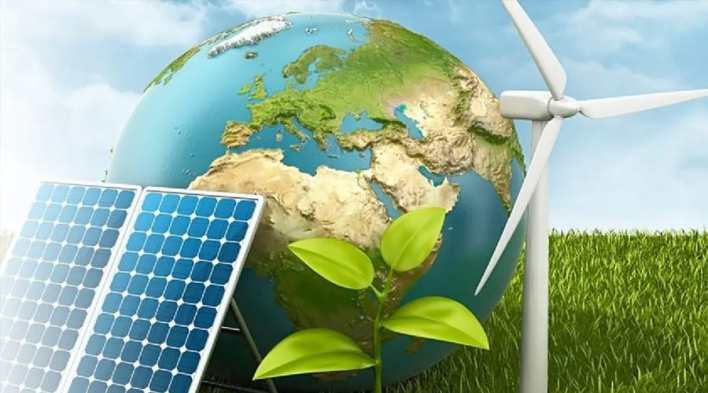
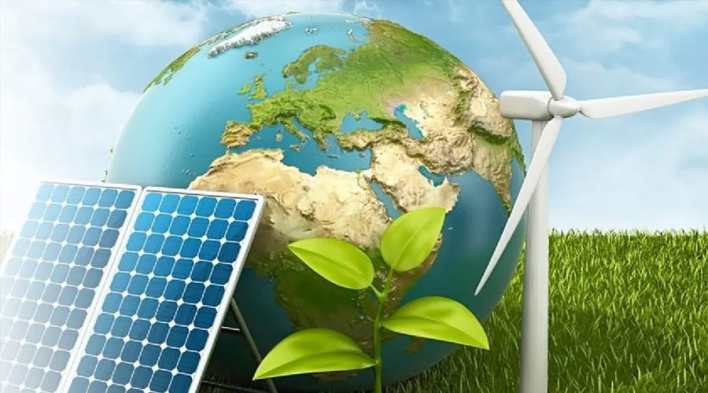

Funding
According to Your Story’s 2020 Annual Funding report, the Indian cleantech sector received 6.7% of total start-up funding from 2015 to 20. Alternative energy companies, particularly solar and wind energy firms, have piqued the interest of venture capital and private equity firms.
This sector is open to 100 percent foreign direct investment under the automatic route (FDI).
India is affected by cleantech legislation.
Currently, India lacks specific laws and guidelines governing the sustainable energy sector. The following acts, guidelines, and arrangements must be followed:
2003 Electricity Act
National Electricity Policy 2005
The National Tariff Policy for 2016 (NTP)
The United States Rural Electrification Policy
National Climate Change Action Plan (NAPCC)
Several explicit state strategies and industrial policies are in place.
The Indian government recently announced the development of new regulations that will allow businesses to purchase renewable electricity from state distributors at “green tariffs,” with the goal of incentivizing companies to switch entirely to renewable energy and thus lowering India’s carbon footprint.
The next step
The need for a cleantech transition aligns not only with rising environmental awareness, but also with the development of a low-carbon, resilient, and regenerative economy. Green stimulus-driven recovery has the potential to address the current challenges of unemployment and unsustainable growth while also addressing climate change vulnerabilities.
The Indian government has set lofty goals for the cleantech sector, with the goal of creating a net-zero carbon economy in the coming decades. To meet those targets, India must address certain roadblocks, such as the difficulty of acquiring land, clearing utility dues, lowering tariff caps, improving access to finance, and increasing investor confidence.
In order to encourage cleantech start-ups and businesses in India, an enabling policy framework and regulations are also required.
Conclusion
India is investing heavily and making significant efforts in the Cleantech industry. In addition, the government is enacting regulations to make it easier for businesses to obtain renewable energy from the state.
India is becoming more developed in clean technology as a result of the high demand for clean energy to reduce pollution and increase energy security. Some of the most prominent eco-friendly investors have expressed an interest in the Indian Cleantech industry.
Startups in India that use clean manufacturing techniques and safe or less harmful techniques, energy sources, and technology are growing year after year, with an emphasis on producing environmentally friendly products that benefit the natural environment.
As a result, the concept relies heavily on sustainable development. Green technology advancements will help India produce cleaner energy and consume it more efficiently. Cleantech startups are viewed as future pillars of Indian sustainable development by the country’s leaders.
Massive devastation has resulted from global warming, unsustainable growth, and the depletion of fossil fuels. Because there is no other option, individuals, businesses, and governments are all moving toward a cleaner, greener way of life.
Recycling, renewable energy (solar, hydro, wind, biofuels), green construction, electric vehicles, lighting, and other technologies are among the technologies being developed to help clean up our planet. India is also adopting clean technology solutions.
Although it is still in its early stages, we are confident that such a venture will help our country thrive in unexpected ways, eventually leading to a clean and green environment. In India, cleantech is still a relatively new concept, but it is rapidly expanding, and the government is taking notice. Furthermore, the Indian government has proposed a number of approaches and rules to promote this sector.
If its wind, solar, biomass, and hydro resources are properly utilized, this region has the potential to transform India’s electricity production. Clean technologies have the potential to eliminate natural pollution caused by nonrenewable energy sources. It can also provide universal energy access. As a result, the market for cleantech has expanded.
edited and proofread by nikita sharma

